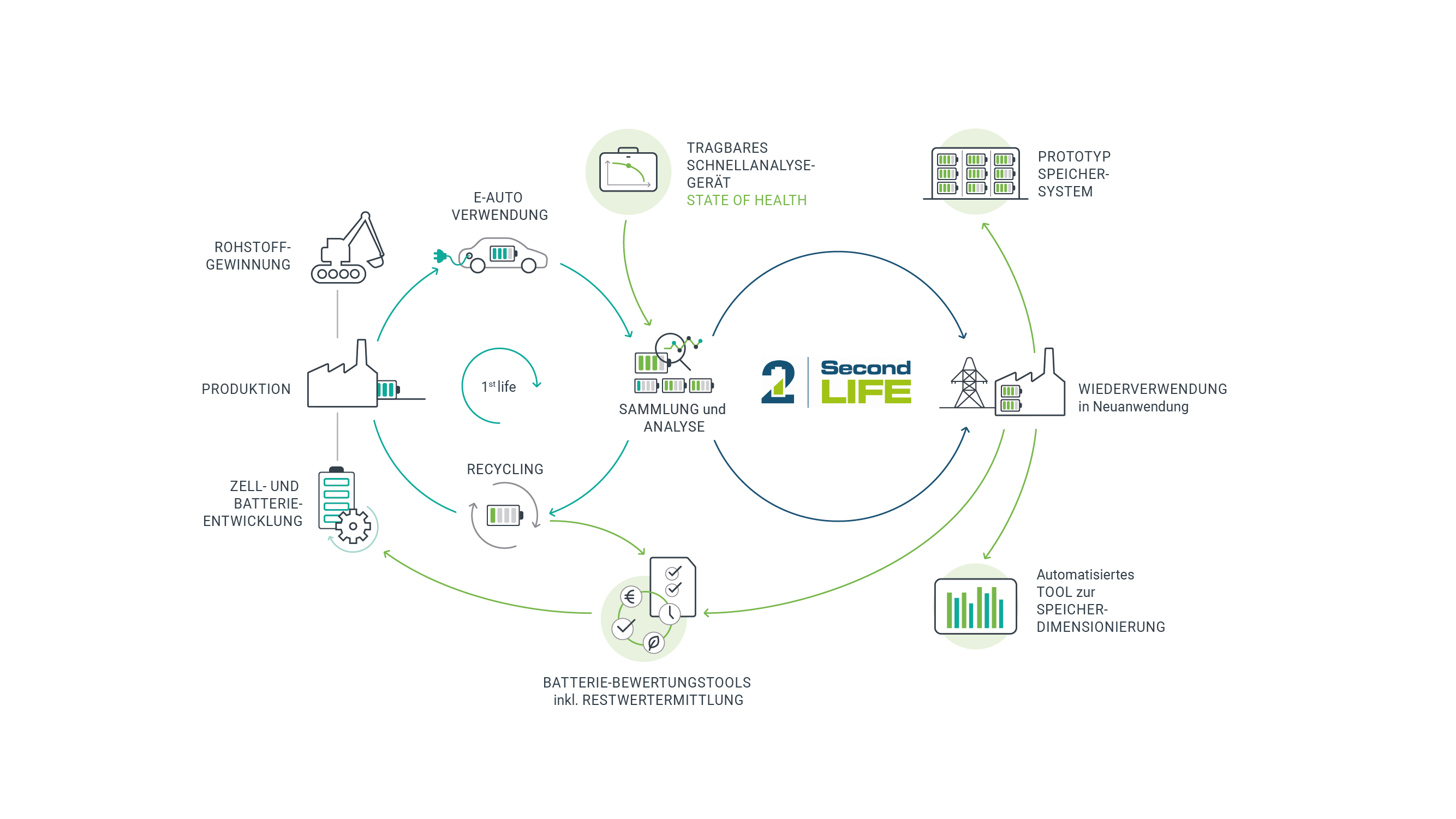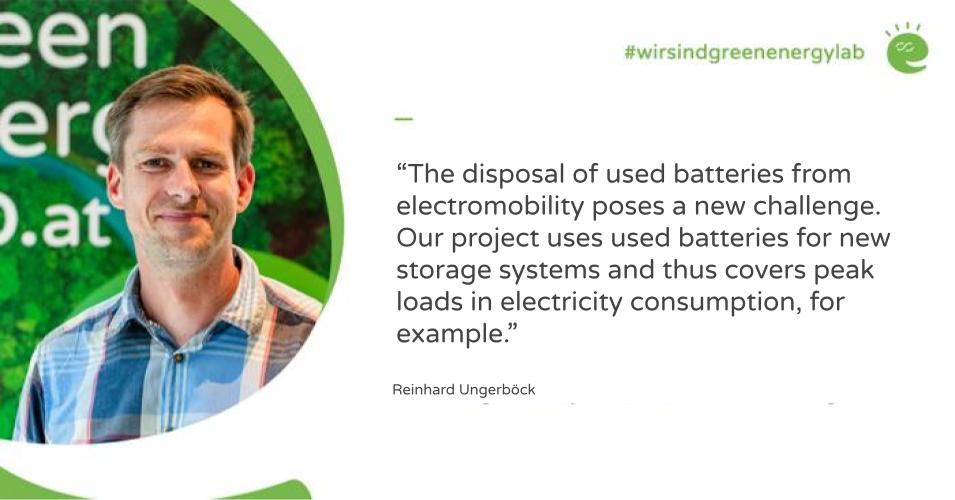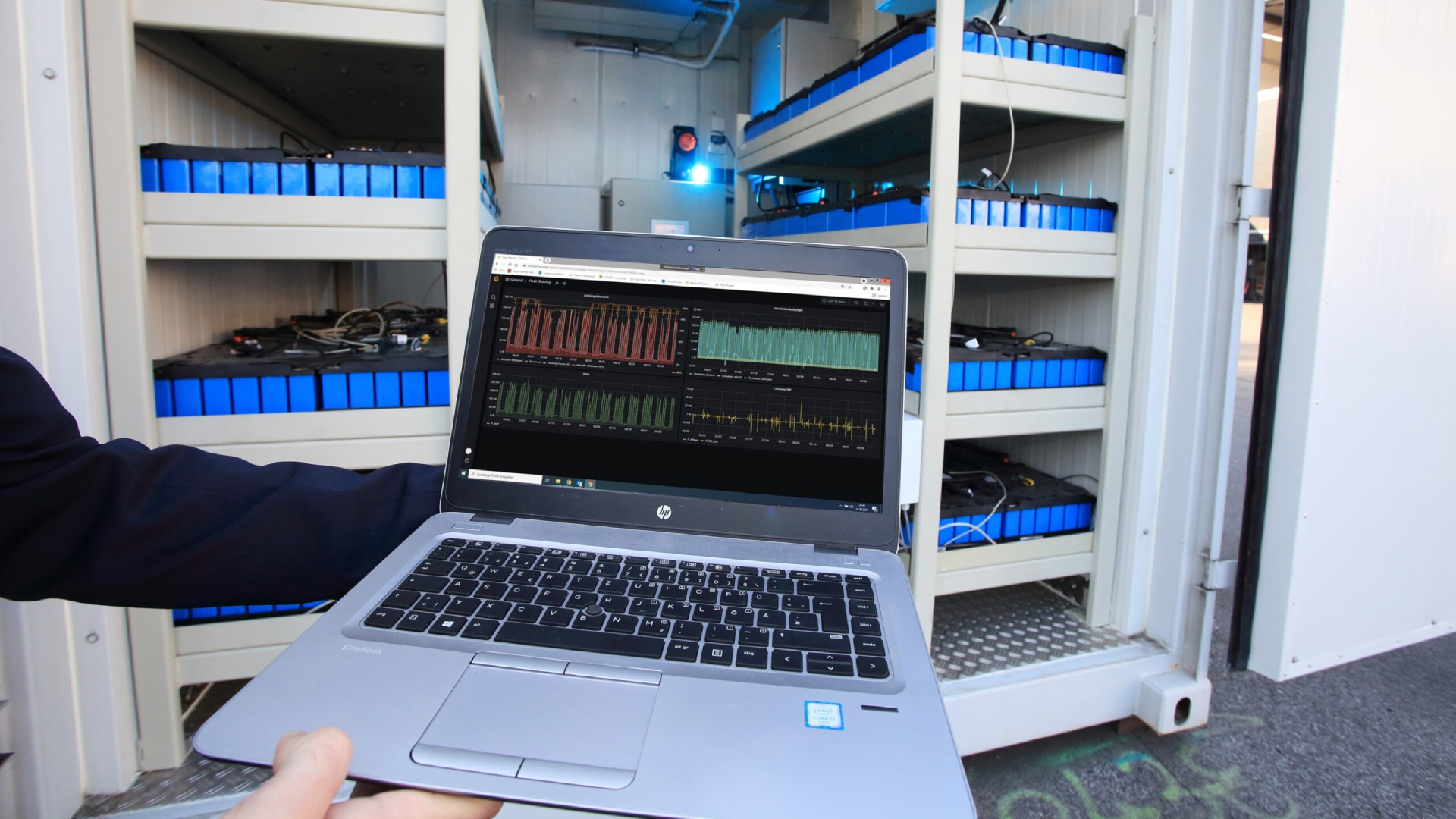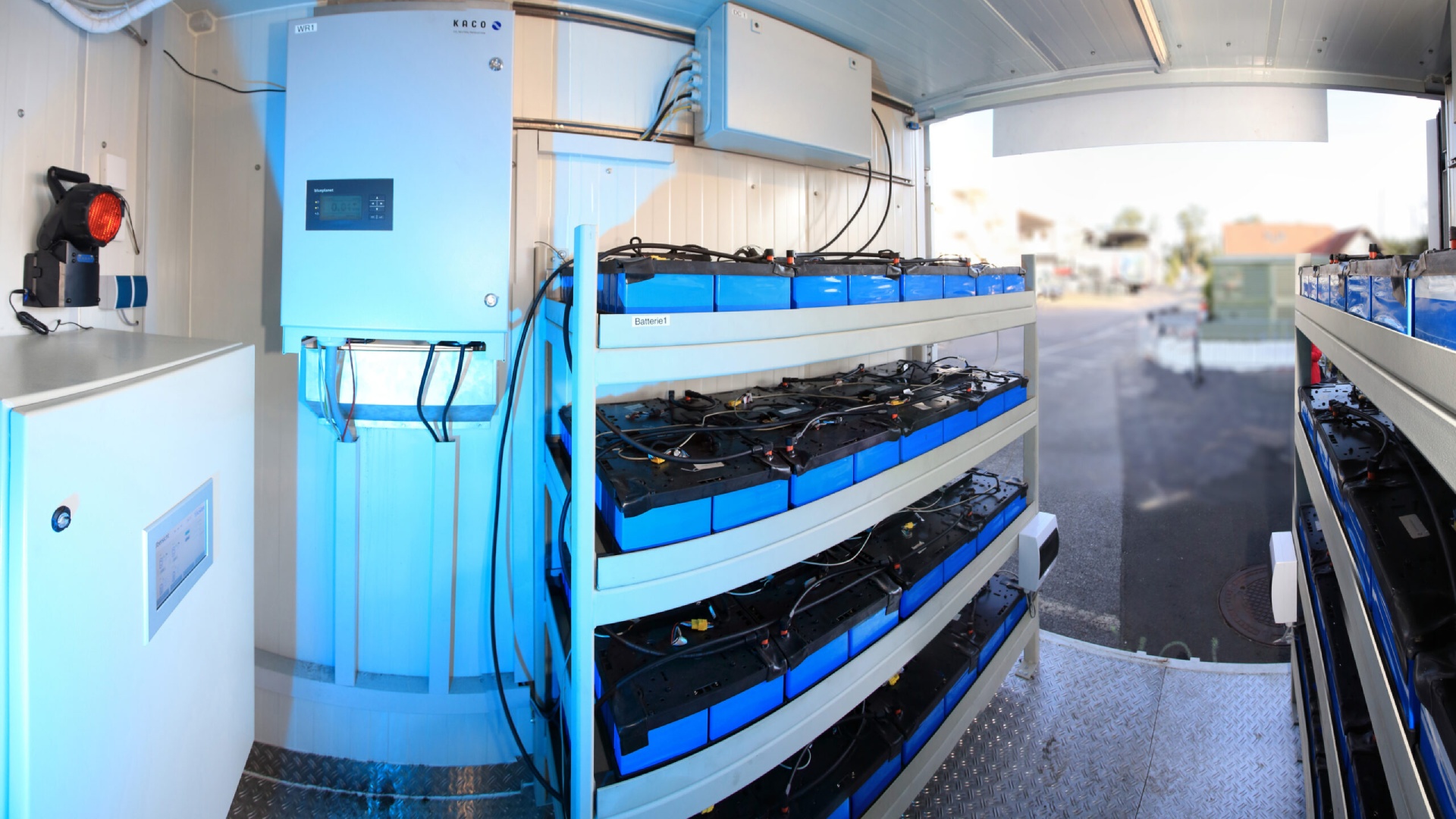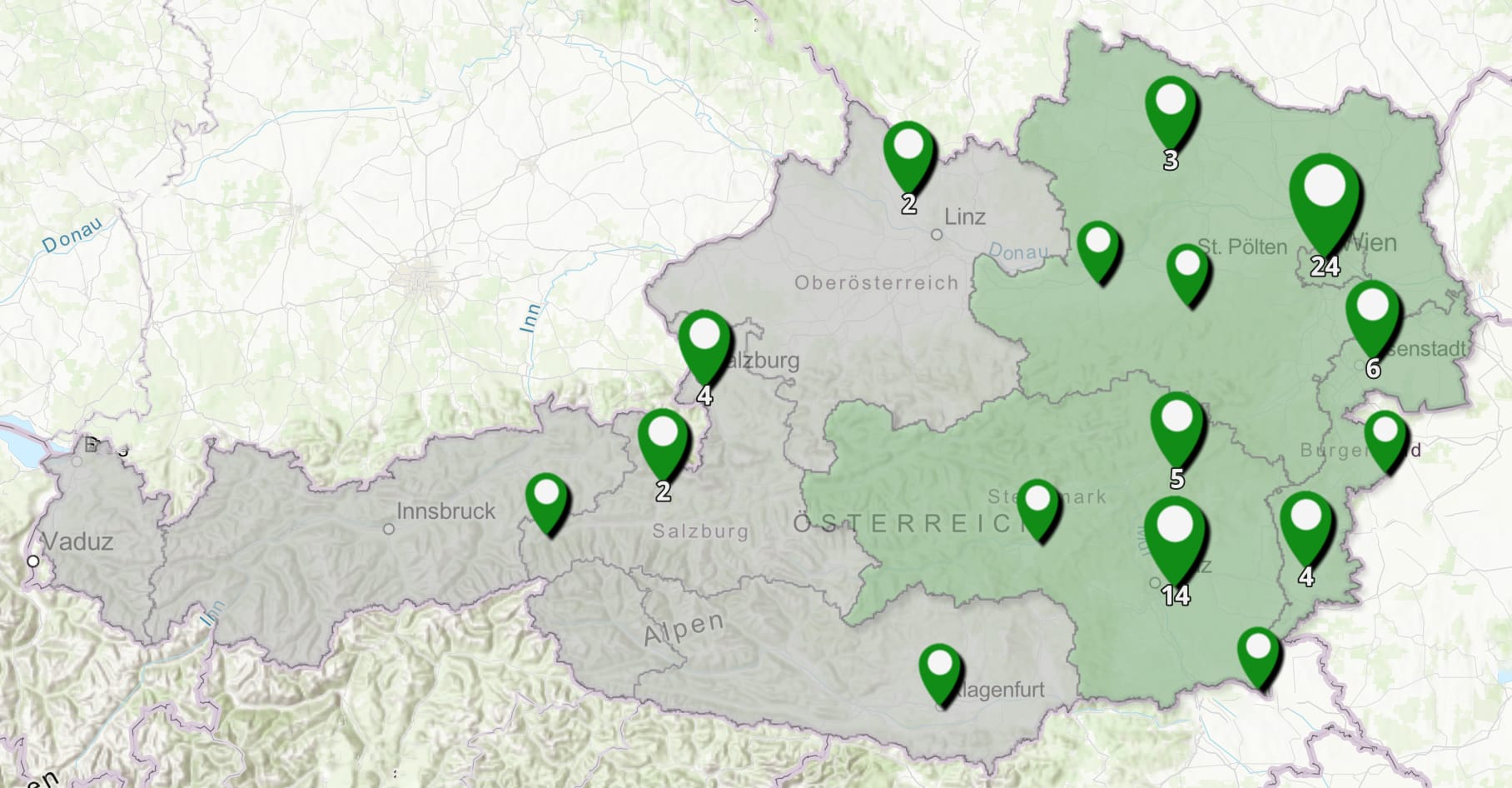SecondLifeBatteries4Storage
A system for utilizing used batteries of electric vehicles as a stationary energy storage device
This research project has been completed. Access the SecondLifeBatteries4Storage Results Fact Sheet here.
Solutions that make renewable energies more usable and promote decentralised electricity production or electricity and heat storage are just some of the topics that are of great concern to the energy industry and which Green Energy Lab is addressing as part of the Energy Flagship Region initiative.
Objective of the SecondLifeBatteries4Storage project
Recycling batteries from the e-mobility sector – The basic idea behind the “SecondLifeBatteries4Storage” project is to reuse batteries that have already been used in the electromobility sector. These are often discarded when they have only 80% of their capacity left. However, they are still good for further use as electricity storage in stationary applications.
These second-life batteries can be combined into larger, stationary electricity storage systems and used to cover peak loads (“peak shaving”) as well as to optimize own electricity in the industrial sector. They can also be used for grid stabilization or as a blackout reserve. The use of energy storage systems is playing an increasingly important role, particularly for the optimal integration of electricity generated from renewable energy sources and for the cost-effective use of electricity. On the one hand, these storage systems are intended to delay the disposal of batteries with a sufficient state of health (the ratio of available capacity to nominal capacity and the future ageing behavior of batteries) and, on the other hand, to reduce costs for grid provision through lower peak loads.
Approach and methodology of the SecondLifeBatteries4Storage project
Mobile rapid analysis – As part of the project, a mobile rapid analysis device was developed for the rapid and cost-effective assessment of the condition of used batteries, as it is generally not possible to access the stored battery data directly without the vehicle manufacturer and thus determine the state of health. The special feature of this product is its cross-brand functionality for measuring a wide variety of batteries. If the batteries have a sufficiently high state of health, they are installed in stationary accumulator packs. In addition, a software tool was developed to comprehensively determine the residual value, which includes all process steps (first-life, reconditioning, second-life, recycling). For practical application, a so-called automatic storage dimensioning tool is required, which can optimally dimension the storage system for a wide range of applications (peak load coverage, PV self-consumption optimization, etc.). This dimensioning tool was also developed as part of the project.
Outlook
The work programme aims to create optimal conditions for a free market for second-life batteries from the electromobility sector and to realize both ecological and economic benefits by exploiting the potential of used battery systems for storage applications. The project thus made a decisive contribution to implementing affordable and sustainable energy systems.
Do you already know about the Car2Flex research project on bidirectional charging?
Project manager Reinhard Ungerböck from the Grazer Energieagentur on the “SecondLifeBatteries4Storage” project in the podcast relevant by Stefan Tesch
You are currently seeing a placeholder content of YouTube. To access the actual content, click on the button below. Please note that data will be passed on to third-party providers.
The following model solutions were being developed in the SecondLifeBatteries4Storage project:
SEMI-MOBILE BATTERY STORAGE
QUICK ANALYZER FOR USED BATTERIES
Media reports on the project
SecondLifeBatteries project successfully completed
The aim was to enable the continued use of e-car batteries that are no longer suitable for use in vehicles as power storage units in stationary applications. At the same time, special instruments were developed to determine the condition and state of health of the e-car battery. The resulting independence from the battery manufacturer creates the conditions for a free market for second-life batteries.
To the articleFull energy ahead - the old electric car battery becomes a SecondLife battery – information desk of BMIMI
The SecondLife-Batteries4Storage project is funded by the Climate and Energy Fund and carried out jointly with the Graz Energy Agency as part of the "Green Energy Lab" Flagship Region. The project is about a large-scale electricity storage system that consists entirely of old electric car batteries.
To the articleGraz consortium develops second life for batteries from electric cars – studium.at
Batteries in electric cars are usually discarded when they only provide 80 percent of their power. Until now, they have had to be disposed of and recycled, but a Graz-based consortium wants to give them a second life. AVL List, AVL DiTEST, Energie Steiermark, Grazer Energieagentur, Saubermacher and Smart Power used the batteries to build a large-scale electricity storage system independent of original equipment manufacturers (OEMs). The project was completed on Tuesday.
To the articleA second life for old car batteries – steiermark.orf.at
A Styrian showcase project breathes new life into old car batteries. A consortium of companies and institutions from the energy, technology and environmental sectors have developed large storage units made from decommissioned car batteries.
To the articleGraz residents give old e-car batteries a second life – Kronen Zeitung
Batteries in electric cars are usually discarded when they only provide 80 percent of their power. Until now, they have had to be disposed of and recycled, but a Graz-based consortium wants to give them a second life. AVL List, AVL DiTEST, Energie Steiermark, Grazer Energieagentur, Saubermacher and Smart Power used the batteries to build a large-scale electricity storage system independent of original equipment manufacturers (OEMs). The project was completed on Tuesday.
To the articleHow e-car batteries are given a second life – Kleine Zeitung
A consortium consisting of AVL List, AVL DiTest, Energie Steiermark, Grazer Energieagentur, Saubermacher and Smart Powern developed a complex large-scale storage system made from e-car batteries. Why the project is crucial for the success of e-mobility.
To the articleAgainst wasting resources: Old e-car batteries are given a 2nd lease of life – top-leader.at
For the first time, a consortium has built a large-scale electricity storage system entirely from old electric car batteries.
To the articleE-car batteries get a second life in Graz – leadersnet.at
An Austrian consortium has built the first independent large-scale electricity storage system made entirely from old batteries from electric cars.
To the articleOld electric car batteries can now be put to good use – Holding Graz
A consortium consisting of AVL List, AVL DiTEST, Energie Steiermark, Grazer Energieagentur, Saubermacher and Smart Power built the first large-scale electricity storage system made entirely from old electric car batteries, independent of OEMs (original equipment manufacturers).
To the articleA second life for car batteries: SecondLifeBatteries4Storage project successfully in operation
Making more intensive use of renewable energies, promoting decentralized electricity production and electricity and heat storage – these are just some of the challenges facing the energy industry and which the Green Energy Lab in the Energy Showcase Region is addressing.
To the articlePioneering project SecondLife: New storage solution for e-car batteries in use
The SecondLife Batteries funding project was launched in 2018 under the Green Energy Lab Flagship Region – and is now already in its first application on the market. “Sustainable and customer-oriented storage solutions are a key element in the development towards 100% renewable energy, which is one of the areas Green Energy Lab is focusing on in the SecondLife Batteries project,” says Mathias Schaffer, member of the Green Energy Lab Executive Board.
To the article

